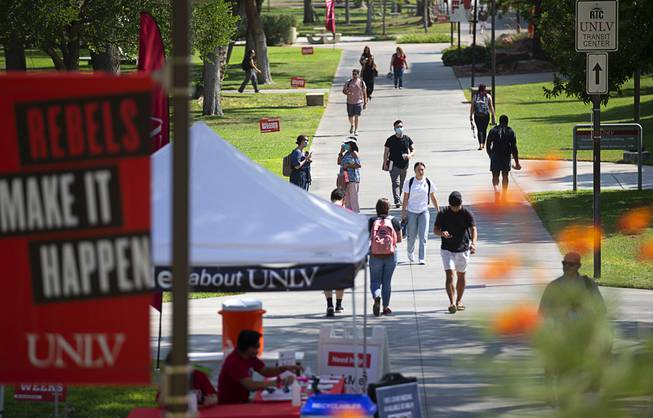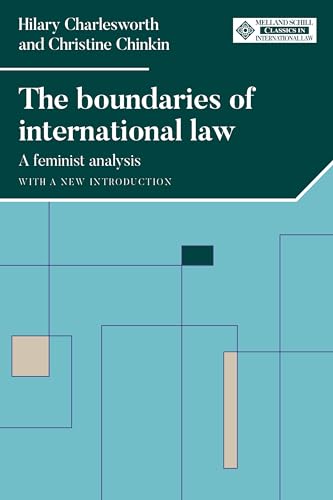Trump's Higher Education Policies: Effects On Diverse College Campuses

Table of Contents
Changes to Financial Aid and Their Impact on Diverse Student Populations
Trump's administration implemented changes to financial aid programs that disproportionately affected low-income and minority students. Understanding the impact of these changes on diverse college campuses is vital for shaping future policies promoting equity in higher education.
Reduced Federal Funding for Pell Grants and Other Aid Programs
- Specific changes: The Trump administration did not significantly reduce the maximum Pell Grant award amount itself but focused on overall budget constraints which indirectly limited the number of students eligible for aid. There were also discussions and proposals for further reforms to the Pell Grant system which did not materialize.
- Disproportionate impact: Low-income students and students from underrepresented minority groups rely heavily on Pell Grants and other federal aid programs to finance their education. Reduced funding directly translates to decreased college accessibility for these populations.
- Statistical data: While a direct correlation between reduced federal funding and a decrease in diverse student enrollment requires further specific research studies linking these variables, the general trend of decreased access to funding points to a potential negative impact on minority student enrollment.
- Consequences: Decreased access to financial aid leads to increased student debt, delayed graduation, and, in some cases, prevents students from pursuing higher education altogether. This exacerbates existing inequalities and limits upward mobility for underrepresented groups.
Shifting Priorities in Federal Funding for Higher Education
The Trump administration's budget proposals often prioritized specific initiatives while reducing funding for others. This shift in funding priorities had ripple effects across diverse campuses.
- Redirected funding: While specific data on the exact redirection of funds is required for a conclusive analysis, it's generally believed that funding shifts prioritized areas that aligned with the administrations' political priorities, potentially reducing funding for programs promoting diversity and inclusion initiatives at many institutions.
- Impacted programs: Programs supporting minority-serving institutions (MSIs), such as Historically Black Colleges and Universities (HBCUs), Hispanic-Serving Institutions (HSIs), and Tribal Colleges and Universities (TCUs), might have experienced funding reductions or stalled growth. This could directly impact access and support for diverse students at these institutions.
- Consequences on campus diversity: Reduced funding for programs that support diverse student populations can lead to fewer resources for recruitment, retention, and support services, ultimately impacting campus diversity and equity.
The Impact of Trump's Immigration Policies on International and DACA Students
Trump's immigration policies created significant challenges for international and DACA students, impacting the diversity of American colleges and universities.
Restrictions on International Student Visas
- Changes to visa processes: The administration implemented stricter visa processing procedures, increased scrutiny, and longer wait times for international students seeking to study in the US.
- Decline in international student enrollment: These stricter measures likely contributed to a decline in international student enrollment at US universities, potentially harming the international collaboration and diversity on campuses. Further research is needed to establish a definitive causal link.
- Implications for campus diversity: The decrease in international students diminished the richness and diversity of perspectives and experiences on college campuses.
The Uncertainty Surrounding DACA (Deferred Action for Childhood Arrivals) and its Impact on Undocumented Students
- Legal challenges to DACA: The repeated legal challenges to the DACA program created uncertainty and fear for undocumented students, impacting their ability to focus on their studies.
- Psychological and academic stress: The constant threat of deportation caused significant psychological and academic stress for DACA students, affecting their academic performance and overall well-being.
- Data on DACA students in higher education: While precise numbers vary, a significant number of DACA students attend American colleges and universities, and the potential loss of their contributions to campus diversity is a major concern.
The Influence of Trump's Rhetoric and Policies on Campus Climate
Trump's rhetoric and policies contributed to increased polarization and impacted the campus climate surrounding diversity, equity, and inclusion.
Increased Polarization and its Effect on Campus Discussions Around Diversity, Equity, and Inclusion
- Examples of divisive rhetoric: Certain statements and policies from the Trump administration fueled division and controversy on college campuses, hindering open dialogue and collaboration on issues of diversity and inclusion.
- Impact on open dialogue: This created an environment where open and respectful discussions about sensitive topics became more challenging, impacting the fostering of inclusive learning environments.
- Affected experiences of marginalized groups: The resulting climate negatively affected the experiences of marginalized groups on campuses, leading to feelings of insecurity and exclusion.
Changes in Affirmative Action Policies and Their Potential Influence on Campus Diversity
- Attempts to roll back Affirmative Action: While not directly resulting in a complete rollback, there were efforts to limit the scope and effectiveness of affirmative action policies, which could potentially reduce the representation of underrepresented groups in higher education.
- Potential impact on representation: Any restrictions on affirmative action policies could have long-term consequences for the diversity of student populations on college campuses. Further research will be required to determine the precise impact.
- Long-term consequences for campus diversity: The long-term consequences of these potential changes on the diversity of future student bodies remains a critical area of ongoing discussion and study.
Conclusion: Understanding the Lasting Effects of Trump's Higher Education Policies on Diverse Campuses
Trump's higher education policies had a significant impact on diverse college campuses, affecting financial aid access, immigration policies affecting international and DACA students, and creating a more polarized campus climate. These changes have long-term implications for the diversity and accessibility of higher education for future generations. Understanding Trump's higher education policies and their effects is essential for promoting diversity on college campuses and advocating for equitable access to higher education. We must continue researching and engaging in discussions about these crucial issues to ensure that our colleges and universities remain vibrant and inclusive spaces for all students.

Featured Posts
-
 The Metropolitan Museum Of Arts Monstrous Beauty A Feminist Analysis Of Chinoiserie
Apr 28, 2025
The Metropolitan Museum Of Arts Monstrous Beauty A Feminist Analysis Of Chinoiserie
Apr 28, 2025 -
 Investigation Into Lingering Toxic Chemicals In Buildings Following Ohio Train Derailment
Apr 28, 2025
Investigation Into Lingering Toxic Chemicals In Buildings Following Ohio Train Derailment
Apr 28, 2025 -
 Pirates Defeat Yankees With Walk Off Hit In Extra Innings
Apr 28, 2025
Pirates Defeat Yankees With Walk Off Hit In Extra Innings
Apr 28, 2025 -
 U S Dollar Weak Start To Presidency Mirrors Nixon Era
Apr 28, 2025
U S Dollar Weak Start To Presidency Mirrors Nixon Era
Apr 28, 2025 -
 Ftc Appeals Activision Blizzard Acquisition Microsoft Deal In Jeopardy
Apr 28, 2025
Ftc Appeals Activision Blizzard Acquisition Microsoft Deal In Jeopardy
Apr 28, 2025
Latest Posts
-
 2026 Wbc Aaron Judge Weighs In On Potential Participation
Apr 28, 2025
2026 Wbc Aaron Judge Weighs In On Potential Participation
Apr 28, 2025 -
 Judge Considers 2026 World Baseball Classic Participation
Apr 28, 2025
Judge Considers 2026 World Baseball Classic Participation
Apr 28, 2025 -
 Aaron Judge Open To 2026 World Baseball Classic
Apr 28, 2025
Aaron Judge Open To 2026 World Baseball Classic
Apr 28, 2025 -
 Aaron Judges 2026 Wbc Bid A Door Cracks Open
Apr 28, 2025
Aaron Judges 2026 Wbc Bid A Door Cracks Open
Apr 28, 2025 -
 Aaron Judges Impact On The Yankees Lineup Boones Comments And Strategy
Apr 28, 2025
Aaron Judges Impact On The Yankees Lineup Boones Comments And Strategy
Apr 28, 2025
